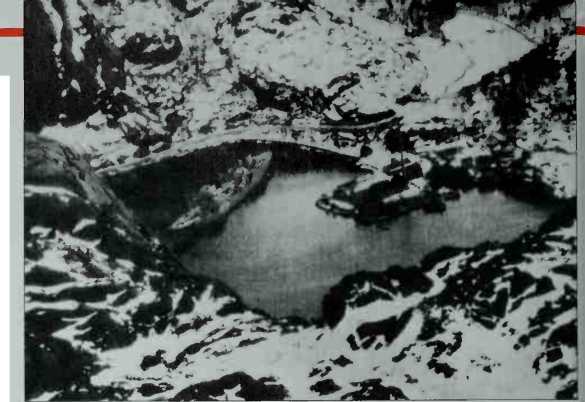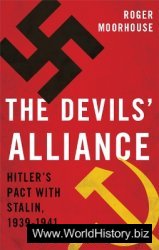Soldiers were driven relentlessly back amid some bloody fighting. With them was a section of the French forces, weary and disenchanted with apparently no hope of escape.
Commander of the BFF, General Lord Gort, had quickly realised there was no option but to withdraw his men by sea. The best and shortest route would have been from Calais to Kent, but the French port was almost in the hands of the Germans already. Dunkirk seemed to be the single remaining point from which any kind of meaningful evacuation could take place.
British and French soldiers staggered on to the beach at Dunkirk in groups or sometimes singly. All semblance of order was gone after the hasty retreat in which bands of men lost sight of their units. Communication between commanders and their men was cut inland. The soldiers, now acting on initiative, got to Dunkirk as best they could.
The French forces' commander in chief. General Gamelin, had been bemused by the German advance. His tanks, evenly spaced down the frontier, were unable to provide a striking action against the rear of the Germans. So while the Panzer armies were tiring and running short of supplies, there was no one to eph their vulnerability.
Ironically, it was Hitler himself who called a halt to the German

Right: Jhe Altmark lurking in Norwegian waters was holding British POWs when HMS Cossacff attacked.
March. Concerned that vital tank divisions were at risk if they went into action against the by-now concentrated strength of the Allies on treacherous marshlands and would be unable to complete the invasion of France, Hitler stopped the key Panzer advance. He was made even more anxious by the counter-offensive of sorts that the Allies had managed to stage at Arras.
¦ DUNKIRK ¦
The strategy was perhaps sound. Hitler’s decision came on 24 May when a comprehensive rout of the enemy seemed assured. Its unavoidable side effect was to give Allied troops two days’ grace without which an evacuation from Dunkirk would surely have been impossible. Historians have subsequently speculated that, had the BEF been lost in northern France, Britain would have sought peace at any price as there would have been no army left to fight with.
As early as 20 May, Admiral Bertram Ramsay, the Flag Officer at Dover, had been gathering a small fleet capable of crossing the English Channel to rescue soldiers. At this stage it was believed just 35,000 men would be saved.
Still more and more men were straggling on to the beach until the ragged throng numbered 38,000. Many were by now unarmed, picking up weapons where they could which had been discarded en route or fallen from the hands of recently killed comrades. There were still rations of sorts, but many soldiers had been without sleep for days. Between periods of calm and order there was panic as the instinct of self-preservation got the better of men with tattered nerves and a deep-rooted fear of what the future might hold if they were not rescued.
Each hour brought the Germans nearer. The shelling grew ever closer. Dunkirk itself was being blown to bits, offering little by way of protection for the British and French forces. There were attacks by the Luftwaffe, too. The low whine of oncoming aircraft followed by the clatter of its guns sent men diving to the ground for cover. Many never got up again.
‘Operation Dynamo’, the evacuation at Dunkirk, was officiaiiy begun on 26 May 1940
There was a feeling of resentment among many that the Royal Air Force was not doing its bit to aid the plight of the soldiers. In fact, its pilots were going up time and again, helping the rear guard defenders of Dunkirk or hampering the Luftwaffe high above the clouds. But the pilots’ role was invisible to the eyes of the stranded soldiers - who were looking for someone to blame for their appalling predicament.
In peacetime Dunkirk had ample harbour facilities from which a major evacuation could have been carried out with ease. Now the town was rubble and the harbour installations in tatters. The only useful jetty left was wooden planking extending a mile into the sea. Yet it was valueless to the big ships for embarkation. Even the mildest wind would have blown the vessel into its concrete foundations causing damage below the waterline. As time went by it became clear that men would have to be taken off the beaches, no matter how cumbersome the task.
Operation Dynamo, the evacuation at Dunkirk, was officially begun shortly before 7pm on 26 May although in fact some support units had already been brought back to Britain. Before midnight fewer than
8,000 men had been brought home. '
When the depth of the dilemma facing the bulk of Britain’s army became clear, a flotilla of small boats was called upon to assist. Such boats already had to be registered with the government. Now they were recruited for the still-secret operation, with! many civilian captains being allowed to stay with their ships.
The British public finally got to hear about ‘Operation Dynamo’ on 31 May, when about 194,000 British troops had been brought back under the guidance of the Royal Navy. When news about the crisis was broadcast, many more owners of small boats set sail immediately. This was the brave face of Dunkirk that haunts history.
Their task was no easier than that faced by the Royal Navy. Bombardments by the Luftwaffe continued claiming the lives of servicemen and civilians alike. On 1 June the courage of the civilian boat owners reaped dividends when 64,429 soldiers were rescued. Having ferried their battle-worn cargo to safety, boat owners turned back to face the risks all over again in a bid to haul yet more soldiers to safety. Not least of their worries were the minefields that lay between them and their destination.
By any standards, the rout of the British army in France by Hitler’s




 World History
World History









